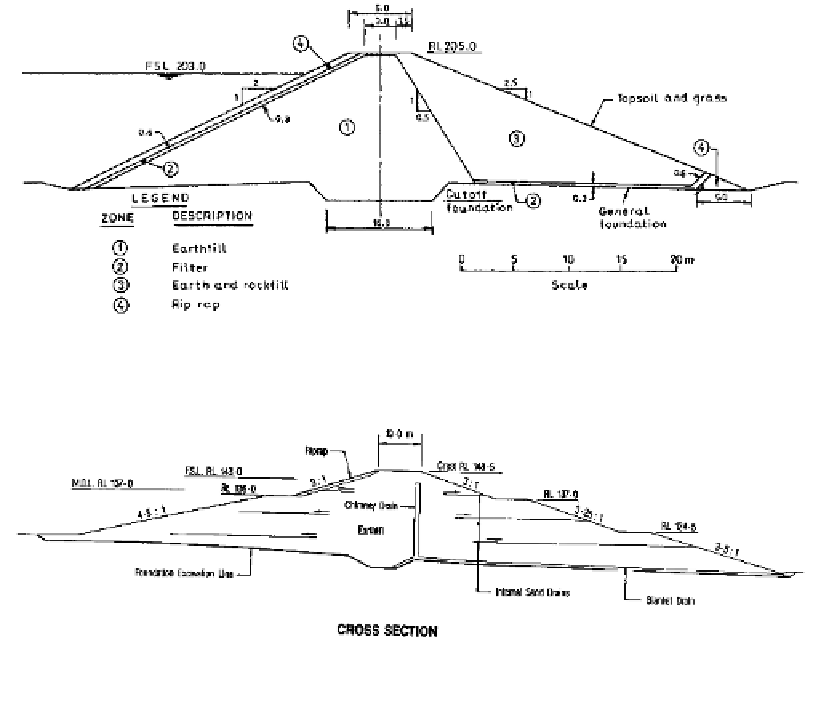Environmental Engineering Reference
In-Depth Information
was practical, using a transition zone of weathered basalt rock compacted in 150 mm
thick layers. The “earthfill” was sandstone from mine overburden compacted in 150 mm
thick layers.
8.3.2.2
Earthfill dams with horizontal and vertical drains
The mine runoff water dam at Drayton Mine (Figure 8.5) is constructed on a foundation of
interbedded siltstone and sandstone. It is a low consequence of failure site, allowing adop-
tion of a design without vertical drain. Zone 3 was compacted mine overburden (mainly
sandstone), which results in a low permeability earth/rockfill with some degree of internal
erosion and piping control to Zone 1. A horizontal drain was provided to collect seepage
through the foundation in a controlled manner.
The Ash Pond Dam for Loy Yang Power Station (Figure 8.6) is an off river storage
founded on Quarternary sediments overlying Tertiary Coal Measures.
The sediments include widely interspersed beds of overconsolidated fissured silty and
sandy clays, and clayey and silty sands. The Coal Measures consist of inferior coal and
coal seams separated by interseam sediments composed of sandy clays, silts and silty
sands which form a series of aquifers. Increased piezometric levels within these aquifers
following filling of the ash storage, required the installation of a series of relief wells at the
downstream toe of the dam. The dam has a vertical chimney drain and horizontal drain,
to control seepage through the dam and its foundation. Internal sand drains were pro-
vided to control construction pore pressures.
Figure 8.5.
Mine runoff water dam, Drayton Mine (courtesy of Coffey Geosciences).
Figure 8.6.
Ash Pond Dam, Loy Yang Power Station (courtesy State Electricity Commission of
Victoria).


